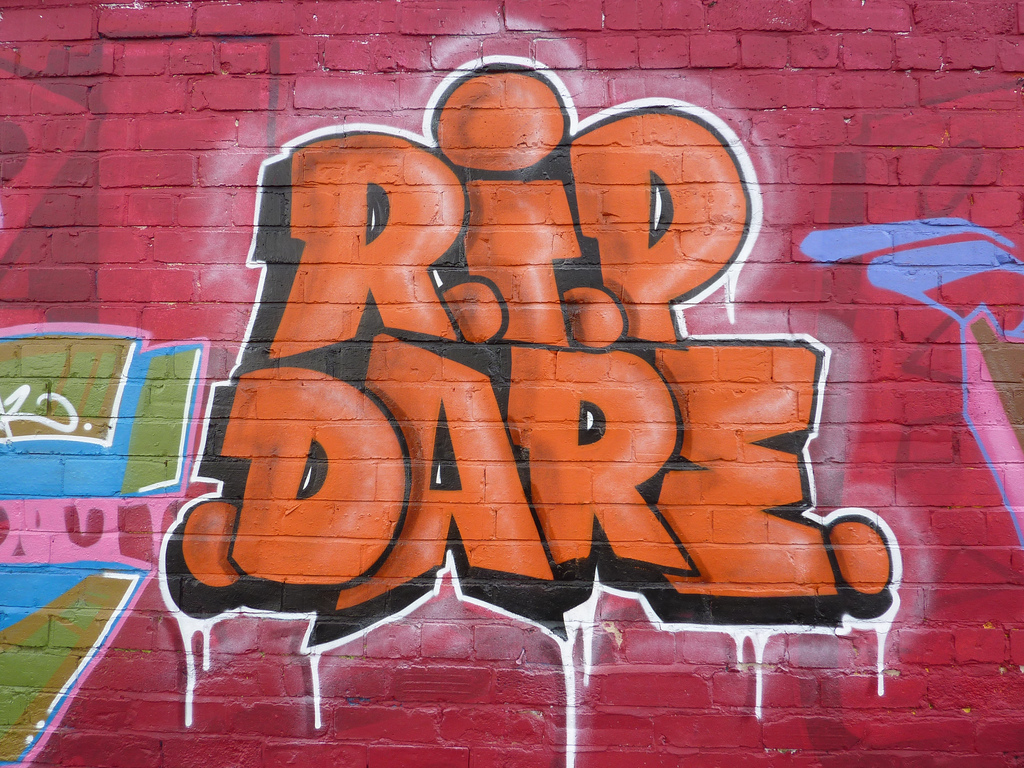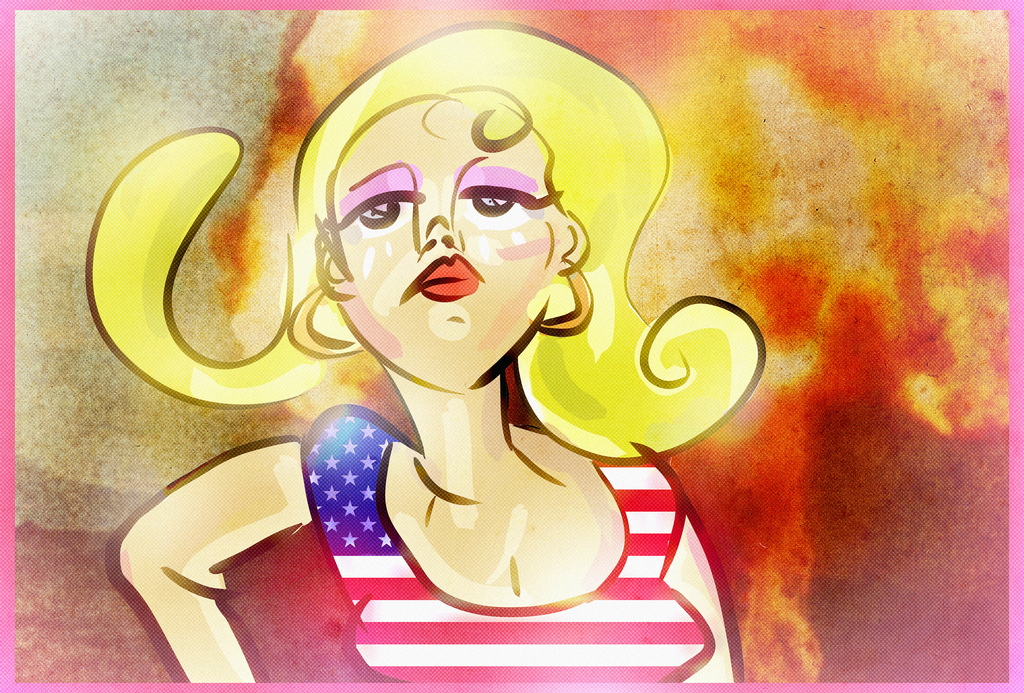|
Get your developers and marketers taking customer calls; you’ll soon stop developing anything that requires your customers to endure to pain of calling you. Seriously.
Come on, hands up, how many of us live in fear and dread of having to call any company for help? Generally speaking, it’s a fairly hideous experience. You want someone to answer, quickly, who can actually help. You would think this is simple, but generally it’s not. I came into the customer service industry through the back door, so to speak. Starting at the complaints end, I saw the rich, fertile ground for improvements. Simple improvements that often get overlooked. One radical improvement in customer service though, in my opinion, is to get rid of your call centre. Call centres are an amazing hive of industry all of their own, likely devastating to your brand and bottom line (despite the often heroic efforts of those working in them). We’ve made a science out of something that simply shouldn’t be. Let’s step back. You are the provider of a product or service. You want your customers to buy what you offer, remain loyal and recommend you to others. So brand is important, feedback is important and continual improvement is important. Here’s the thing. Call centres as a rule tend to remove the customer from your business and cost you a phenomenal amount of unnecessary money. In larger companies we’re often talking tens of millions of dollars each year in staffing alone. Then there’s the technology, any other capital investment and – most devastatingly – the damage to your brand. Think about how they came to exist. Back office staff were getting too many calls distracting them from their ‘day job’. So call centers were born; a false economy. My interest in customer experience transformation has often meant I’ve found myself in roles managing call centre contracts, or having one in my portfolio. In my last role, one of the most visionary people I’d worked with went for the big ‘call centre’ job, I was horrified. Worse, he wanted me to come and help him create a transformation. Now don’t mistake my statements here for any derision towards customer service professionals, quite the opposite. The people who work and rise in the industry are extremely dedicated, insightful, resourceful and knowledgeable. But, frankly, they are often set up to fail. For a call centre to give great service, it requires a number of things. Here’s what typically happens in organizations with a call centre ‘machine’: A call comes in from a customer – why? Because the company has failed to provide something the customer needs. So the first thing is, how do we recognize this customer? Where we all fall down in our thinking is to assume companies are like Big Brother, they know everything about you when you call. There are various forms of CRM (customer relationship management) systems that can – in theory – help companies to not only identify the customer but give a good indication as to why they are calling (begging the question, why not fix it before they call). I say, in theory, because most technology would work amazingly well if it was all the company had ever owned and all its basic operating systems were the most compatible and up to date. In reality, most companies now have so many legacy systems it takes an army of specialists to even map it all out. So, if you happen to be a customer of a company and use several of its products or services, to think the company would know our whole profile is a given, but it’s often not the case. Once you’ve got past they ‘who am I’ part, then there’s the ‘what am I calling about’ part. This is often sent with yet another silent prayer, or, depending on your experience of queuing and being identified, many expletives and a desperate hope that this actual person you are now talking to will be able to help you. To do that requires a huge amount of training in the company's products and services. Now, what do you think is often the first thing to get canned when call volumes and/ or company expenditure is too high? Good learning and development specialists, most managers, staff and customers all want employees to be excited about the brand that they work for, to be advocates outside of the workplace. In reality, very little investment gets made in this and any training becomes about how to press which buttons, with very little context about the bigger picture. Then there’s the knowledge about the detailed inner workings of the product or services themselves. “Isn’t that what training is for?” people ask. Mm, training is useful but not to learn the contents of an encyclopedia, which is what it can be like trying to understand the in’s and out’s of some products or services. This is where Knowledge Management Systems come in. A bit like CRM systems in term of their issues, with the added complexity of requiring constant upkeep and input. I’ve yet to see a fully ‘locked and loaded’ system, hence the array of post it notes and signs adoring many call centre desks. So once the inadequately trained person on the end of the phone manages to somehow find an answer to your plight, the next task is to track customer issues and make improvements to your product or service. Well, that’s what you’d think. Even companies with fabulous tracking systems (again, the same system issues arise as for CRM systems and Knowledge Management systems), generally fail to take adequate action. The reporting system, if there is one, produces statistics. Decision makers might look at the reports and say, oh, it’s only x% of revenue or our customer base, accepting certain degrees of failure in their product or service; though it can be a leap to say these things get connected to even this degree. At best there will likely be a handful of improvement specialists that tend to then fail to have a real impact in terms of systematically reducing the call/failure demand based on a lack of overall understanding and commitment of the wider leadership. It would make good sense to have a customer service representative involved all the way upstream, when you have a new concept and then start the design, or particularly when you are redesigning an existing product. This is a rarity, even if they are involved, it’s seldom with any kind of sign off - even when there’s a direct impact on call centre resources. Then of course there’s the internal politics of call centers. The typical dynamic is a mutual loathing between customer service and the developers and marketers. Imagine instead a customer service department that was looked upon as the ‘looking glass’ of success or failure of the company. Where those developing the upstream products and services regularly visited to hear first hand what customers had to say. Likewise, imagine customer service departments that live and breathe the brand and are active users and advocates of your products or services. There are companies that have programmes to encourage or enforce this, but these are often short lived due to costs. When it does happen though, it opens up a whole new perspective and, for a short time, dialogue begins. A new found respect can be seen and the customer gets considered right upstream where they should always have been anyway. So here is the point, why do you have a call centre? Take a long look at the costs here, direct and indirect. If you can look through all the points above and say, “we are doing those well”, then great, you are in the minority. If not, seriously, take a close look at this self destructive machine you’ve created and either set it up for success, or get rid of it and send those calls upstream. Dare you. This article was originally published in LinkedIn. photo credit: <a href="http://www.flickr.com/photos/10295270@N05/4500117446">R.I.P Dare</a> via <a href="http://photopin.com">photopin</a> <a href="https://creativecommons.org/licenses/by/2.0/">(license)</a>
0 Comments
We are becoming lonelier, and it’s killing us. This is the basic premise of an article I was sent this week, supported with lots of facts and figures, and sited social isolation as the key driver. I have a slightly different take on it, that is, people have become something they are not in order to fit into a culture that is not even serving us anymore. People have become disconnected from who they really are and who they were born to be. If you are not connected with your own inner self, how can you truly connect with the world around you?
As a child of the 70’s, I was intrigued by a recent Australian drama series called Puberty Blues. Its focus around the lives of young teens really took me back to that time when we emerge into the world forever changed by our hormones. The show is fairly gritty and depicts the young men as arrogant louts who need to maintain an image of cool by ‘dissing’ the chicks. And the girls of course generally abide by this etiquette of the time and get themselves into all sorts of hot water because they really felt they couldn’t say no to the guys. What really struck me about this series was an interview I read in a magazine with the young actors who were asked whether the lives they were acting out bore any resemblance to their own. Their answers were heartening, the guys were blown away by how macho and stand offish the young men they play are, the guys of today being much more comfortable with being more tactile around their mates and talking about their feelings. The girls talked about the young women of today being much more comfortable dictating their own terms. I was listening to an Abraham Hicks talk recently where I heard wise words that really resonated with this. The essence was that we get wrapped up in trying to impart our wisdom to the younger generations, when in actual fact they are born wiser. Knowledge is accumulative in the greater consciousness, our experiences and lessons are woven into the very fabric of life itself and slowly but surely we evolve. Things change, probably over about four generations, pretty quick really. Technology aside, when I think back to where we were only a few decades ago when I was growing up: Americans was locked in the Cold War with Russia, in Europe we still had a wall around East Germany, South Africa still had a system of Apartheid, being gay was not something anyone (not even a celebrity) admitted to – ever, people still debated whether smoking was bad for your health; and the role of men and women was changing. Allan and Barbara Pease have written much on the topic of the male/female differences (I like Why Men Don’t Listen and Women Can’t Read Maps), and I always thank them for introducing the idea to me that all men and women have a degree of typically masculine versus typically feminine traits. Most of my generation in Scotland were the product of homes where the mum was a housewife and the dad worked, yet we were being educated that woman had equal rights and many are now out there trying to be superheroes, with the generations following looking at the stressed, burnt out versions of their parents and deciding that is not who they want to be. Good. Being born a woman in this life has been an interesting experience. For all talk of ‘equal rights’, what we saw in the home was not that. We had no template for what it even meant. This is evident in our corporate cultures today. Even in companies that espouse attractive values, generally the reality is still a construct that fits and plays upon our more masculine traits (particularly in the way decision making takes place) with little time invested in two-way communication and the growth of our people and culture. I’ve worked closely with senior managers and ‘leaders’ in Executive positions for the last 15 years, I’ve seen women become more masculine time and again in a bid to be successful in the workplace. One was determined not to become like that because of a female boss she’d worked for who was publicly renowned for being masculine in her manner. Yet I'd observe her in meetings with her mannerisms and speech all but saying ‘watch me as I sit here and scratch my imaginary balls as I show you who the alpha dog is’. On the flip side, she’d often talk of her young teenage kids, texting or taking calls from them, and we’d see a more feminine side – but where had that woman gone in her workplace dealings? It’s an interesting world alright. The point I keep coming back to is this, we were all born with characteristics, traits and talents that – for one reason or another – we have felt the need to cover up or change in order to survive. This does not make for a happy life. We have organizations filled with people who feel like they are one person on the inside and another to the outside world, turning up each day to a prescribed job description, managed by performance reviews whose outcome must fit a bell curve. Imagine organizations filled with people who are in tune with themselves, bought in to the vision of the organization and allowed to simply let their strengths and passions flow. How do we get from here to there? We have made some enormous strides in our society, and we evolve – eventually. One person at a time, one decision at a time. So how miserable do you need to be? How lonely? What’s it going to take for you to come out and be who you are? What will it take for you to choose happy? This article was originally published on LinkedIn. As Peter Marshall, a chaplain, said in 1947 “'... if we don't stand for something, we shall fall for anything”. When this question is asked, the most prevalent answer I hear is “family”. I think for most of us family is certainly important, and we value it highly, but what would we say if our own family was asking us that question, what else do you stand for?
Earlier in my career all the senior managers in the company were sent on a leadership development course. In small groups we met for a couple of days at a time over a 6 month period. I remember feeling uncomfortable initially. The people around us can seem so different; we think they don’t understand us, and - for the most part - they don’t. That’s because we never really talk to them about what is truly important. Instead, we make judgments about people based on what we see and hear, yet this is simply the tip of the iceberg. The visual analogy of us as icebergs, which I learned from the course, really stuck with me. We can observe the behaviours of another person (the tip of the iceberg that pops its head up above the ocean), but the beliefs, values and needs of that person are unseen (the much greater part of the iceberg below sea level). With that wonderful, cursed, mind of ours we start to weave stories about other people’s behavior, usually based on our own beliefs, values and needs. This leads to misunderstandings, because we really can’t fully understand another person’s experience and what’s driving their behavior without asking them. Even then, people often struggle to put words to what lies beneath the surface. When I was interviewing for a Training Manager last year, she introduced the concept of ‘Lego Serious Play’ . Throwing a huge pile of blocks on the table, she asked us to take a minute and build a representation of what was important to us, in whatever way we wanted to, from the blocks available. I instinctively grabbed the few pink blocks that there were and started to make the shape of a heart. My colleague set about his creation, and thankfully (since neither of us were exactly ‘master builders’) we were given a few moments to explain what we’d built. On the face of it, he and I had very little in common. This exercise, though, got to the heart of what was important to each of us in a matter of minutes; and cleverly gave our prospective employee some good insight into her new employer. Both of us had built very different looking creations, but both represented the importance we placed on people above all else, and bringing people on the journey with us. It’s often easier to use this kind of abstract approach, or even pictures or songs, as a way of describing some of the things that have deeper significance for us. Just this week I sat down with my daughter, who is not enjoying her current day care situation, and we put together a ‘dream book’ of all the things that are important to her. We chose pictures that ultimately say she loves a good balance of being social and having her own space. I tell her it’s important that she holds on to what she wants (more space), that it can sometimes take a while, but she’ll get it. The more authentic we are being, the more in tune with ourselves we are, and the world around us. Too often we are in situations where what we really value and believe is hidden – or forbidden, or just not seen as socially or culturally acceptable. Sometimes knowing what’s important comes out of knowing what doesn’t feel right or fit. In the middle of selling our house right now, I had a lightbulb moment while looking at the sales blurb. The agent first described our house with the usual glossy pitch, we had beautiful pictures taken and the house was marketed on the front page of the property press. As people started to look through, we got feedback that the décor is tired. True, it is. Not being a real estate agent myself, I had pretty much left them to the initial marketing. But what I came to realise was this approach doesn’t fit with who I am, nor what the house is. It needed to be more authentic, transparent. So I rewrote the blurb, describing the house exactly as I see it, with “perfect flow and function” and included a very transparent “the opportunity to update the décor and carpeting is easy pickings for those looking to add value”. It’s important that we stand for who we are through our everyday dealings and interactions. If you feel the place you work every day, or the people you hire to provide you a service, or the people you spend time with, aren’t a match, maybe it’s time to move on. Easier said than done, I know, but you at least start the thought process – maybe even put a dream book together. The sooner you bring to light what you stand for, the sooner you can stand in the shoes of someone in the process of becoming much more in tune with themselves, much happier in their relationships, work and life. So what’s stopping you? This article was originally published at LinkedIn. photo credit: <a href="http://www.flickr.com/photos/8070463@N03/9172311242">Bouba, Madiba's father</a> via <a href="http://photopin.com">photopin</a> <a href="https://creativecommons.org/licenses/by-nd/2.0/">(license)</a> In search of deeper meaning in our lives, we often look outwards and forget our true answers lie within. By 22 most of us have formed a view of who we are and what we are about. Although by this point much of ‘nurture’ has smothered out our true nature, and the picture we have – at best – looks a little blurry, if not totally obscured.
The great news is that, at any point in time (yes, even right now), you can make the decision to be who you were born to be . When I saw the #IfIWere22 series on LinkedIn Pulse I was excited by the prospect of exploring the question as part of the journey to uncovering the real you. Looking at your younger self through the lens of time can provide some wonderful clues to what lies beneath. For me, 22 was probably the start of the journey I’m still on, though I didn’t know it at the time. I’d finished my postgraduate diploma the year before and had finally secured that first ‘proper’ job as a Training Assistant at a university in Scotland. On my first day in that job I ended up in the emergency room of the local hospital, hooked up to an ECG machine. Embarrassingly, I’d had a full blown panic attack. This was said in such a way that I had no idea it was an actual condition. I thought the nurses were just fobbing me off, just as my doctor had been doing in the months before. I’d gone to see my doctor complaining of chest pains and, after a few courses of antibiotics for what he’d diagnosed as a chest infection, he’d started treating me as a hypochondriac. Now, in all my life I’d had very few health issues. As a teenager, I’d been a competitive swimmer and at my peak physically. To be told there was nothing wrong, when your heart is pounding out of your chest, your head feels like it literally has a vice grip on it, your vision goes and you just want to throw up, leads to all sorts of worries that creep into your mind. Especially as, in between these attacks, I had lost all my energy and had started to become almost completely housebound. Thankfully this was 1994 and the internet was not yet at our fingertips, but I did know enough to freak out that I might be suffering from anything like a tumor to a heart attack, and even Chronic Fatigue Syndrome, which was still being debated as to its legitimacy by medical professionals at that point. Finally, months later, a psychiatrist diagnosed Panic Disorder. Needless to say, I bought a book (Panic Attacks by Christine Ingham), learned about the condition and how to control what was happening. In retrospect, I have learned much from this episode in my life, most poignantly it taught me the power of the mind and its effect on our physical condition. Of course, at that point I didn’t quite realise that the view I’d formed of myself was entirely created in my mind. It had been created from years of living in a certain culture, with parents and a wider family that had their own personality traits, beliefs and values. How you think of yourself is influenced by all of this, and by friends, adversaries, teachers, kids at school, sport club members, coaches, neighbours, on and on. What I’d tell my 22 year old self is:
This article was originally published in LinkedIn. photo credit: <a href="http://www.flickr.com/photos/76284765@N00/6008333467">American Woman</a> via <a href="http://photopin.com">photopin</a> <a href="https://creativecommons.org/licenses/by/2.0/">(license)</a> Confucious said “Life is simple, but we insist on making it complicated”. This is more true today than ever in our busy, hectic lives. We are surrounded by the things we buy, from the money we earn, to go buy the things, and so on. Happiness seems in short supply, it’s become a goal instead of a way of being.
True happiness comes from the peace in simply being who you are, and allowing that in others. You came into this life with traits, talents and desires; it’s in being that person, the inner you, that you will find true joy and happiness. In previous posts I’ve written about how to discover the real you within, stripping back the unhelpful layers or beliefs we’ve adopted about ourselves and allowing the real you to emerge. In the process of doing this myself, it’s struck me time and again that simplicity in every aspect of life is so key to our wellbeing. I remember arriving in my new home in New Zealand, or Aotearoa, in August of 2006. For years I’d worked, owned property and paid bills. Here I was, cashed up, no immediate worries about generating an income, no house, no bills; simplicity. As I walked along the beach one day it struck me how liberated I felt. I could do anything, be anything. I also realised that is always true. Sure, many times you may have been in a job or a relationship where the road to happiness was a little more complicated, but it’s always achievable. You can do and be anything, any time you choose. It had been well over a year since I’d made that decision to move, but in that time I was moving towards what I wanted. Unfortunately I thought all I wanted, or needed, to be happy was to change the country I was living in. The weather had a great impact on how I felt each day and I was a 3 hour drive in any direction from a decent body of water, something I’ve always yearned to be near. I felt if I was living a similar life in a nicer place then all would be well. So there I was in a new place, feeling liberated, and life was full of possibilities. In time, there was a new relationship, a new house, a new job, and still I wasn’t happy. Then I thought it was all about having children, and then I thought I needed to change jobs, something less political. As I began to raise my beautiful children, I realised that one of the core parental beliefs I held was to allow my children to be who they are, protect them from becoming someone they are not. Finally, I decided enough was enough. It was time for me to discover who I really am. As I was walking through the neighbourhood the other day, it also occurred to me that the closer anything is to its true nature, the better it is for us. I’ve written much about this in terms of people being true to our own nature, but it really applies to everything that surrounds us – everything we touch, consume and enjoy. Having spent years trying to start a family, my partner came home one day and gave me the number of a naturopath that a client of his had recommended. I rolled my eyes and sighed, great, I just knew the recommendation would be a healthy diet and supplements. Often we are looking for the quickest, easiest option, when we should really be looking for the simplest. Yes, the naturopath did recommend a healthy diet. He talked out the gloopy nature of the complex carbohydrates I was eating and simply pointed out that no self respecting fetus was going to want to grow in that kind of environment. Not particularly scientific, though the science bit was explained, but this is what I summed it up as in my mind. So I got myself motivated and gave the diet a whirl. The basic principle was to eat food that is in it’s natural state – so definitely nothing with refined sugar or flour. Great results, that year we had our first daughter. I used to often refer to this when teaching people about change management. Most companies tend to put in a new system or process and think that will solve all their problems, ignoring the people change at huge cost. There’s nothing particularly complicated about people change, but it does require effort. Effort requires cost, investment, and that is where it falls over. The same for us as individuals. In this hectic, fast-paced world we are looking for the quickest, easiest, answers. Instant gratification. This usually results in a longer spell of misery. The degree of misery that tips you over into action will be different for each of you, and will depend on what aspect of your life it’s affecting. But when it comes to your overall happiness and wellbeing, being yourself - the person you were born to be - is always the simplest path. This article was originally published on LinkedIn. photo credit: <a href="http://www.flickr.com/photos/45823378@N07/4745425727">Mila at the beach</a> via <a href="http://photopin.com">photopin</a> <a href="https://creativecommons.org/licenses/by/2.0/">(license)</a> |
This is a two-step sign-up process, you will have to verify your subscription by clicking the link in the email you should receive after clicking this 'Subscribe' button. If you do not receive the email please check your Junk mail.
By signing up you will only receive emails from shonakeachie.com related to Shona's Blog and you can unsubscribe at any time, thank you. Please note if you are using the Google Chrome browser and want to subscribe to the RSS Feed you will first need to get an RSS plugin from the Chrome Store.
|





 RSS Feed
RSS Feed